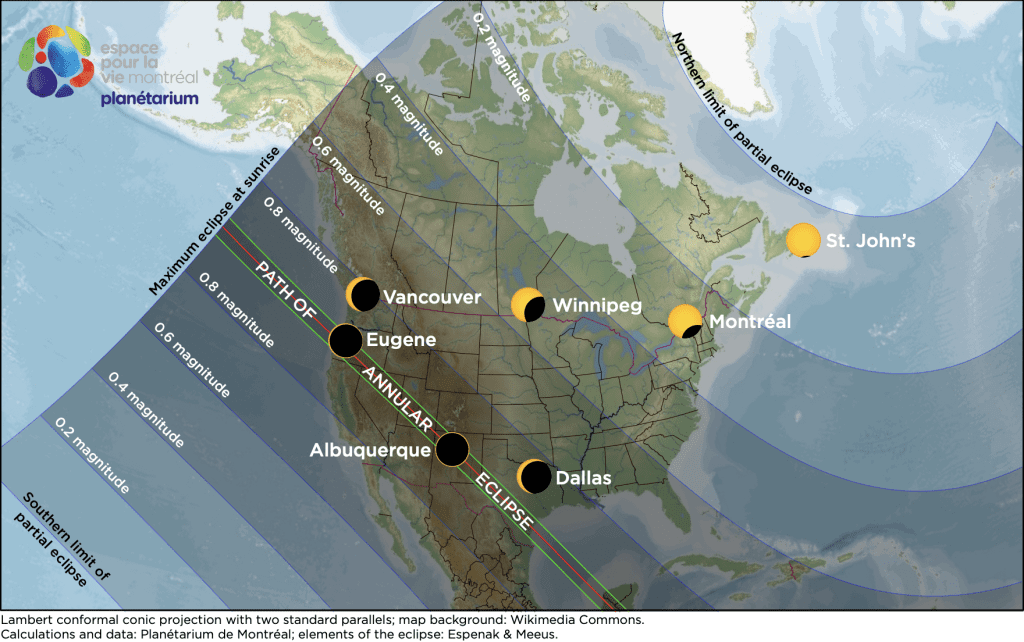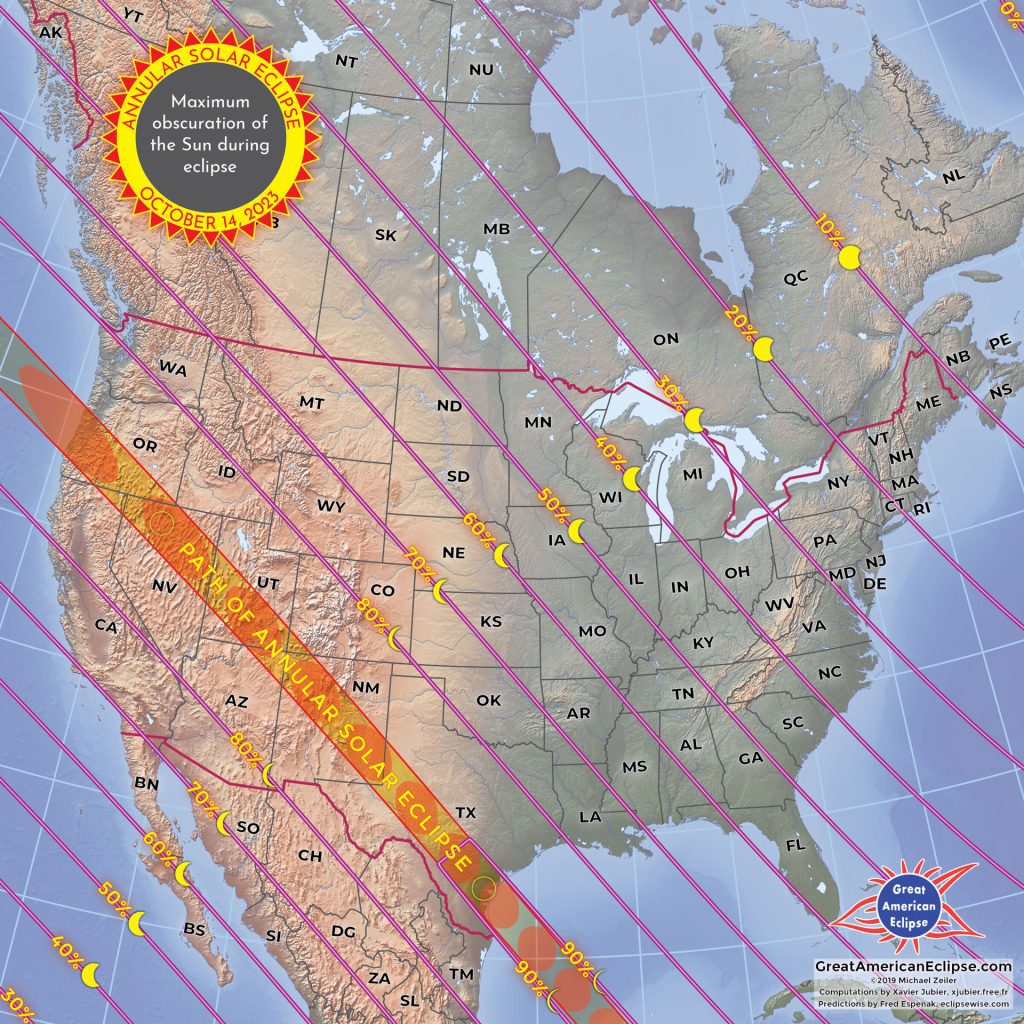Attention, eclipse enthusiasts! You don’t have to wait for the total solar eclipse next spring to get your fix of exciting solar activity. In fact, in just a few short days, Canadians will be able to witness a spectacular annual solar eclipse, which occurs just once every year or two years.
Although the path of the eclipse runs south of the border, Viewers in Canada will still be treated to a partial solar eclipse, with a maximum obscuration of the sun of up to 80% in Western Canada, according to NASA.
According to Espace por La Vie Montreal, an annular eclipse culminates when the silhouette of the Moon detaches completely from the rim of the Sun, creating a mesmerizing “ring of fire” for a few short, but glorious minutes.
Theoretically, viewers can have as long as 12 minutes and 30 seconds to view the natural phenomenon, but the eclipse on October 14, 2023, will be short and sweet – at about 4 minutes and 15 seconds long at the “extremities of its trajectory.”
Viewing the eclipse in Canada
In Canada, viewers will be able to observe a partial eclipse of the Sun in the morning hours and early afternoon, starting just after sunrise in Western Canada and later in the day moving eastward. On the West Coast, the eclipse will roughly begin at 8:08 a.m. PT in Vancouver. It will start at 9:15 a.m. MT in Calgary, and 11:55 am ET in Toronto, as per Espace por La Vie Montreal.
Note that the exact times of the eclipse and its duration depend on your exact geographical coordinates and elevation above sea level. Espace por La Vie Montreal highlights the local times that viewers across the country can view the peak of the eclipse in their cities.
Related Posts:
From coast to coast: Here are 11 stunning islands you won’t believe are in Canada
These Canadian cities are getting a ‘once in a lifetime’ total solar eclipse

According to NASA, an annular solar eclipse occurs when the Moon passes between the Sun and Earth, but when it is at or near its farthest point from Earth.
“Because the Moon is farther away from Earth, it appears smaller than the Sun and does not completely cover the Sun. As a result, the Moon appears as a dark disk on top of a larger, bright disk, creating what looks like a ring around the Moon.”
And in places where a partial solar eclipse is visible, this “ring of fire” will take on a crescent shape.
October 14th’s annular solar eclipse will cross North, Central, and South America, with a maximum obscuration of the Sun taking place in Western Canada.

So there you have it, astronomy lovers. Mark your calendars for Saturday, October 14th, and get your solar viewing glasses ready!

